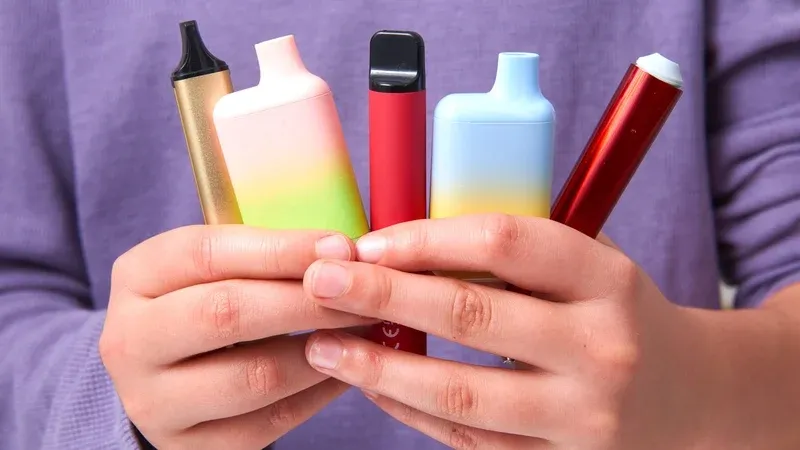
Recently, in Case No.1:20-cv-0039-LO-TCB, Phimosis International accused R.J. Reynolds of patent infringement with No.US10555556B2, but the patent has since been invalidated in the U.S. after a lengthy legal battle that ended in Phimosis International's defeat. What does this ruling mean for the development of domestic electronic cigarette products?
Author bio: Lawyer Tang Shunliang is a specialized attorney in the field of new tobacco at the Beijing Zhong Lun Wen De Kunming law firm.
Part 1: Case Review
In case number 1:20-cv-0039-LO-TCB, R.J. Reynolds has brought a lawsuit against Phimow International for copyright infringement. Phimow International has responded by countersuing R.J. Reynolds for a series of patent infringement cases, highlighting the intense nature of the patent litigation between these two parties.
The case identifier is 1:20-cv-0039-LO-TCB.
On June 15, 2022, the Eastern District Court of Virginia ruled that R.J. Reynolds had infringed on two electronic cigarette technology patents owned by Philip Morris, identified as No. US9814265 and No. US10104911. As a result, they were ordered to pay $10.76 million in damages.
In this case, Phemo International has presented several weapons in its charge of infringement, including the patent No. US10555556B2, and has provided extensive evidence and reasoning to accuse VUSE VIBE of continuous infringement since June 29, 2022, specifically violating the first right claim of the patent. If this charge is proven, the compensation amount will not be limited to 10.76 million.
The R.J. Reynolds company has responded by stating that the patent should not have been granted. This is why there is now news of the recent invalidation of the patent.
Phimo International files a counter lawsuit against R.J. Reynolds for patent infringement of No.US10555556B2.
In its lawsuit, Philip Morris International compared its product VUSE VIBE to the patent No.US10555556B2 and argued that VUSE VIBE falls within the protection scope of "claim 1". However, the lawsuit fails to provide a comparison of whether VUSE VIBE contains the "first and second capillary" related technical features. Even if the patent is not found to be "invalid", it may still not constitute infringement (interested readers can download and read the legal documents).
Previously, Philip Morris International launched a patent lawsuit against British American Tobacco in Germany using patent "EP2282649," which is similar to a capillary oil guide. The court ruled in favor of British American Tobacco, stating that there was no infringement, resulting in Philip Morris International losing the case.
What is the technology solution protected by Claim 1 of patent No.US10555556B2?
A cylinder (commonly known as an e-cigarette) used in an aerosol generation system comprises a liquid storage portion that includes a pod container to maintain the liquid aerosol formation matrix. The pod container has an opening and at least two fluidly connected components (oil guiding components) form the liquid storage portion. All e-liquids need a corresponding storage component.
The first component of the liquid storage section includes:
The first capillary material, including various oil-conducting materials, fiber such as cotton, porous materials like ceramics, is used to evenly distribute the heat generating element for the e-cigarette. It is located near the opening of the shell. The second capillary material comes into contact with the first material and is separated from the opening by the first material (and does not come into contact with the heating sheet). Additionally, the second component of the liquid storage portion includes:
This refers to a device that utilizes an aerosol-forming matrix (e-liquid) to maintain a liquid state and supply the resulting aerosol-forming matrix to a container (e-liquid reservoir) made of a second capillary material. The device includes a fluid-permeable heating element (e-liquid permeator) that extends over the opening of the shell and the average pore size or porosity of the first capillary material is smaller than that of the second capillary material.
The key issue addressed by this patent is:
By setting up two guiding capillaries, the e-liquid is evenly distributed and atomized in the heater, ensuring no waste or reductions in e-liquid due to a decrease in volume or change in angle. This guarantees a high-quality vaping experience with every puff.
2.2 Common oil leakage issues have been resolved. However, the corresponding Mesh products still suffer from oil leakage problems.
The key technology of this plan is:
The use of two different types of oil-conducting materials achieves an even distribution of e-liquid to the heating element according to the frequency of vaping, resulting in improved vaporization efficiency. Claim 1 is not limited to a specific structural form and various forms and materials of oil-conducting materials and heaters are given as examples, making the scope of the invention broad. The technical solution provided in the manual is worth studying and learning from, and perhaps even finding better improvements. To aid readers in analysis, the figures have been marked by the author.
Figure 1 shows the overall technical plan, taking reference from Mesh and IQOS VEEV e-cigarettes. The core principle of oil storage, oil delivery and atomization is presented in Figure 2. Figure 3 illustrates the axial flow of oil passing through the heater and being uniformly released as smoke through the porous ceramic. Figure 4 demonstrates the radial oil delivery system (similar to traditional cotton core + metal wire) for atomization.
Closing Remarks
The ongoing patent wars between two tobacco giants indicate that both HNB and electronic vaporizer companies may continue to face legal challenges. It is possible that tobacco corporations have not yet turned their attention to Chinese electronic cigarette manufacturers, possibly due to other priorities.
However, their weapons arsenal is indeed very extensive, their research and development speed is very fast, and they are constantly laying out new patents.
Attachment 1: Global Distribution of Patents in the Same Cluster
Attachment 2: Patent Texts from Various Countries
Attachment 3: US Patent and Trademark Office invalidity decision.
Statement:
1. This article is intended for internal research and communication within the industry. It does not provide any investment or brand recommendations. This article should not be used as the basis for any investments. 2. The data and analysis conclusions mentioned in this article have not been confirmed in writing with the companies involved. Therefore, all information should be verified with official company releases.
This article is an original creation of 2FIRSTS Technology Co. Ltd. in Shenzhen. The copyright and usage rights belong to the company and no individual or organization is allowed to use, reproduce or copy the content for commercial purposes without authorization. Any infringement of the company's copyright will be subject to legal action.
This document has been generated through artificial intelligence translation and is provided solely for the purposes of industry discourse and learning. Please note that the intellectual property rights of the content belong to the original media source or author. Owing to certain limitations in the translation process, there may be discrepancies between the translated text and the original content. We recommend referring to the original source for complete accuracy. In case of any inaccuracies, we invite you to reach out to us with corrections. If you believe any content has infringed upon your rights, please contact us immediately for its removal.






